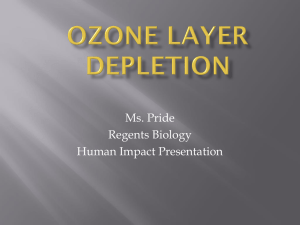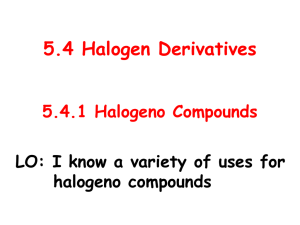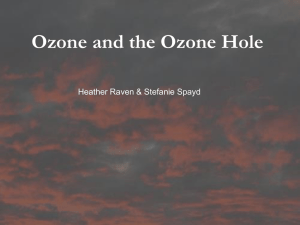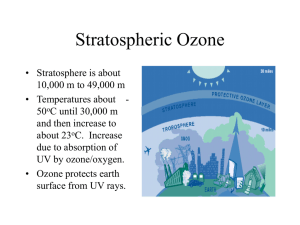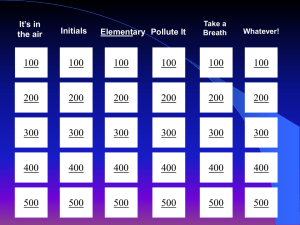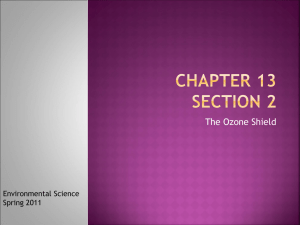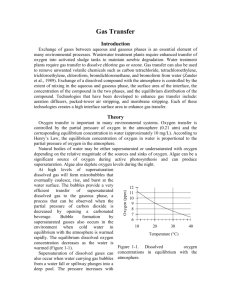1 - JustAnswer
advertisement
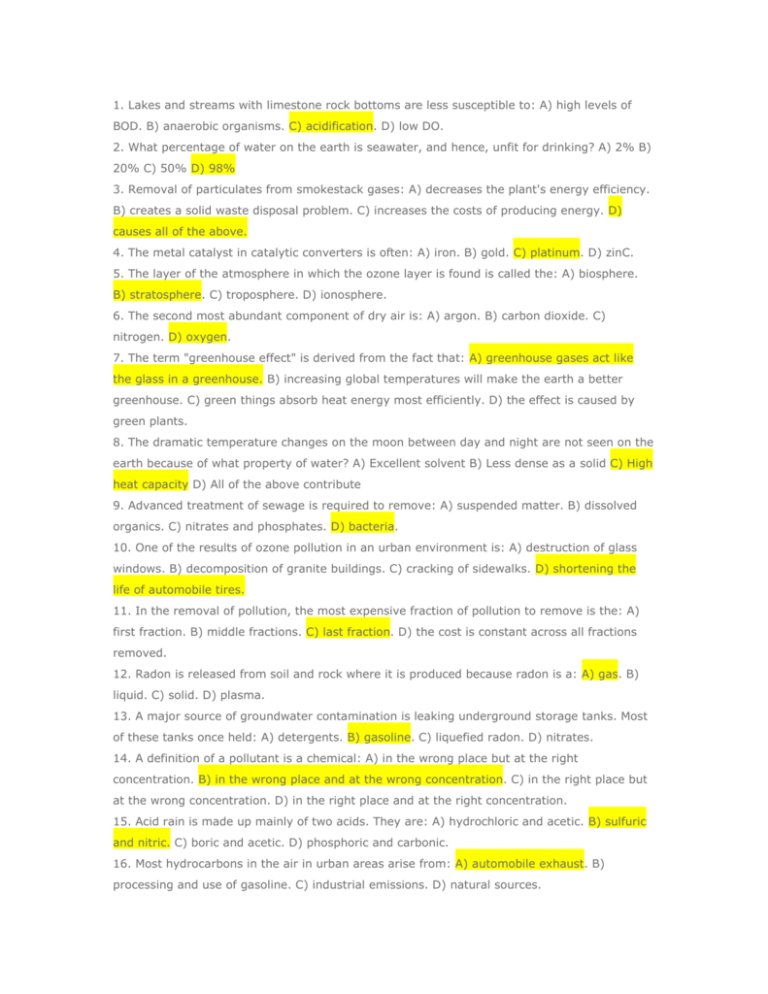
1. Lakes and streams with limestone rock bottoms are less susceptible to: A) high levels of BOD. B) anaerobic organisms. C) acidification. D) low DO. 2. What percentage of water on the earth is seawater, and hence, unfit for drinking? A) 2% B) 20% C) 50% D) 98% 3. Removal of particulates from smokestack gases: A) decreases the plant's energy efficiency. B) creates a solid waste disposal problem. C) increases the costs of producing energy. D) causes all of the above. 4. The metal catalyst in catalytic converters is often: A) iron. B) gold. C) platinum. D) zinC. 5. The layer of the atmosphere in which the ozone layer is found is called the: A) biosphere. B) stratosphere. C) troposphere. D) ionosphere. 6. The second most abundant component of dry air is: A) argon. B) carbon dioxide. C) nitrogen. D) oxygen. 7. The term "greenhouse effect" is derived from the fact that: A) greenhouse gases act like the glass in a greenhouse. B) increasing global temperatures will make the earth a better greenhouse. C) green things absorb heat energy most efficiently. D) the effect is caused by green plants. 8. The dramatic temperature changes on the moon between day and night are not seen on the earth because of what property of water? A) Excellent solvent B) Less dense as a solid C) High heat capacity D) All of the above contribute 9. Advanced treatment of sewage is required to remove: A) suspended matter. B) dissolved organics. C) nitrates and phosphates. D) bacteria. 10. One of the results of ozone pollution in an urban environment is: A) destruction of glass windows. B) decomposition of granite buildings. C) cracking of sidewalks. D) shortening the life of automobile tires. 11. In the removal of pollution, the most expensive fraction of pollution to remove is the: A) first fraction. B) middle fractions. C) last fraction. D) the cost is constant across all fractions removed. 12. Radon is released from soil and rock where it is produced because radon is a: A) gas. B) liquid. C) solid. D) plasma. 13. A major source of groundwater contamination is leaking underground storage tanks. Most of these tanks once held: A) detergents. B) gasoline. C) liquefied radon. D) nitrates. 14. A definition of a pollutant is a chemical: A) in the wrong place but at the right concentration. B) in the wrong place and at the wrong concentration. C) in the right place but at the wrong concentration. D) in the right place and at the right concentration. 15. Acid rain is made up mainly of two acids. They are: A) hydrochloric and acetic. B) sulfuric and nitric. C) boric and acetic. D) phosphoric and carbonic. 16. Most hydrocarbons in the air in urban areas arise from: A) automobile exhaust. B) processing and use of gasoline. C) industrial emissions. D) natural sources. 17. Rainwater is: A) slightly acidic because it reacts with dissolved CO2 gas. B) slightly basic because it reacts with dissolved CO2 gas. C) slightly acidic because it reacts with dissolved radon gas. D) slightly basic because it reacts with dissolved radon gas. 18. Aeration of drinking water: A) removes odors. B) increases dissolved air. C) improves flavor. D) does all of the above. 19. In order for nitrogen to be used by most plants and all animals, it must be: A) separated. B) purified. C) liquefied. D) fixed. 20. Municipal water supplies are disinfected by treatment either with chlorine or with ozone. One advantage which chlorine has over ozone is that: A) chlorine treatment kills viruses and ozone does not. B) chlorine treatment converts dissolved organic compounds into chlorinated hydrocarbons. C) chlorine leaves a taste in the water. D) chlorine continues to provide protection against microorganisms even after the water leaves the treatment plant. 21. Algae growth and death in a lake can increase the BOD of the water. This process is called: A) oxidation. B) fertilization. C) eutrophication. D) regeneration. 22. Running an engine with a richer (more fuel, less air) combustion mixture lowers nitrogen oxide emissions from automobiles. The problem is that: A) hydrocarbon emission increases. B) carbon monoxide emission increases. C) fuel efficiency decreases. D) all of the above occur. 23. Heat capacity is a measure of the heat required to: A) expand the volume of a substance. B) evaporate a substance. C) freeze a substance. D) change the temperature of a substance 1degreeC. 24. Along with fertilizers, which increase BOD, water is often contaminated by this class of agricultural chemical? A) Toxic metal B) Crude oil C) Pesticides D) Radioisotopes 25. An atmospheric inversion is a phenomenon that may have disastrous effects with respect to air pollution. An atmospheric inversion occurs when a: A) lower layer of cool air is trapped by an upper layer of warmer air. B) lower layer of warm air is trapped by an upper layer of cooler air. C) lower layer of oxygen rich air is trapped by an upper layer of oxygen deficient air. D) lower layer of oxygen deficient air is trapped by an upper layer of oxygen rich air. 26. At the high temperature in an internal combustion engine, a fraction of nitrogen in air is converted to: A) carbon monoxide. B) carbon dioxide. C) ammonia. D) nitrogen oxides. 27. Biochemical oxygen demand (BOD) is a measure of the amount of: A) dissolved oxygen in a water sample. B) dissolved biochemical oxygen in a water sample. C) oxygen required to degrade organic material in the water. D) oxygen required by aquatic life in a water sample. 28. Dissolved oxygen is added to streams and rivers by: A) aerobic bacteria. B) waterfalls and rapids. C) decaying algae. D) fertilizer runoff. 29. Even if all CFC production could be stopped today, the ozone depletion problem in the stratosphere would continue for many years because: A) some nations would not follow the ban. B) CFCs are produced naturally in the troposphere. C) CFCs are widespread and very stable in the troposphere. D) ozone is naturally depleted by sunlight. 30. Fluorides are added to water to: A) kill bacteria. B) remove nitrates. C) neutralize acids. D) prevent tooth decay. 31. In secondary treatment of sewage, which removes organic matter? A) Chlorine B) Ozone C) Aluminum sulfate and lime D) Bacteria 32. Many communities are beginning to use sludge on farm fields. What is the biggest problem with using sludge on fields? A) The sludge must be dried before it can be applied to the fields. B) Wet sludge may irrigate the crops. C) Sludge is often contaminated with toxic metals that could be taken up by plants. D) Sludge is a source of nutrients and humus. 33. Most hydrocarbons in the atmosphere arise from: A) automobile exhaust. B) evaporation of gasoline. C) industrial emissions. D) natural sources. 34. One of the potential problems with chlorination of waste water is that it: A) provides no residual protection. B) is ineffective against pathogenic bacteria. C) produces low levels of chlorinated hydrocarbons. D) is more expensive than other approaches. 35. The climate modifying property of lakes and oceans is because of the water's: A) density. B) surface tension. C) boiling point. D) high heat of vaporization. 36. The complete oxidation of coal produces: A) carbon monoxide (CO). B) carbon dioxide (CO2). C) particulate matter. D) soot. 37. The impact of CFCs on the ozone layer is amplified by the fact that: A) CFCs replicate in the stratosphere. B) CFCs decompose before reaching the stratosphere. C) CFCs react with oxygen to produce many reactive intermediates. D) one CFC molecule will lead to the decomposition of many ozone molecules. 38. The layer of the atmosphere that is closest to the surface of the earth is the: A) mesosphere. B) stratosphere. C) thermosphere. D) troposphere. 39. The main difference between air pollution problems today and problems in the past is: A) global warming. B) less polar ice. C) it is now a worldwide problem. D) less rainfall. 40. The major source of oxygen on Earth is: A) land plants. B) ocean based phytoplankton. C) animals. D) decomposition of water in the oceans. 41. The major source of all air pollutants in the United States is: A) industrial emissions. B) residential emissions. C) motor vehicle emissions. D) natural sources. 42. The most abundant component of dry air is: A) argon. B) carbon dioxide. C) nitrogen. D) oxygen. 43. The most serious threat to human health from water supplies is: A) bacteria. B) chlorinated hydrocarbons. C) heavy metals. D) nitrates. 44. The water cycle is driven by the: A) winD. B) sun. C) geothermal energy. D) tides. 45. Which company's industrial waste water would have a relatively high BOD? A) Tasty Tomato Canning Co. B) Shameless Stripper Coal Mine C) Bullworks Ammonia Company D) Spotless Steel Works, Inc. 46. Which of the following is used to remove particulate matter from smokestack gases? A) Bag filtration B) Electrostatic precipitators C) Wet scrubbers D) All of the above 47. Which of the following human activities contribute to the BOD of a river? A) Swimming in the river B) Allowing raw sewage to enter the river C) Paddling a boat across the river D) Fishing 48. Which of the following human activities contribute significantly to increased water pollution? A) Oil spills B) Releasing industrial wastes C) Pouring household chemicals, outdated medicines, etC., down the drain D) All of these 49. Which of these human activities contribute to biochemical oxygen demand (BOD)? A) Dumping lawn clippings in a lake or pond B) Swimming in a lake or pond C) Paddling a boat across a lake or pond D) Fishing in a lake or pond 50. Which one of the following is not a property of carbon monoxide? A) Odorless B) Tasteless C) Colorless D) Undetectable
